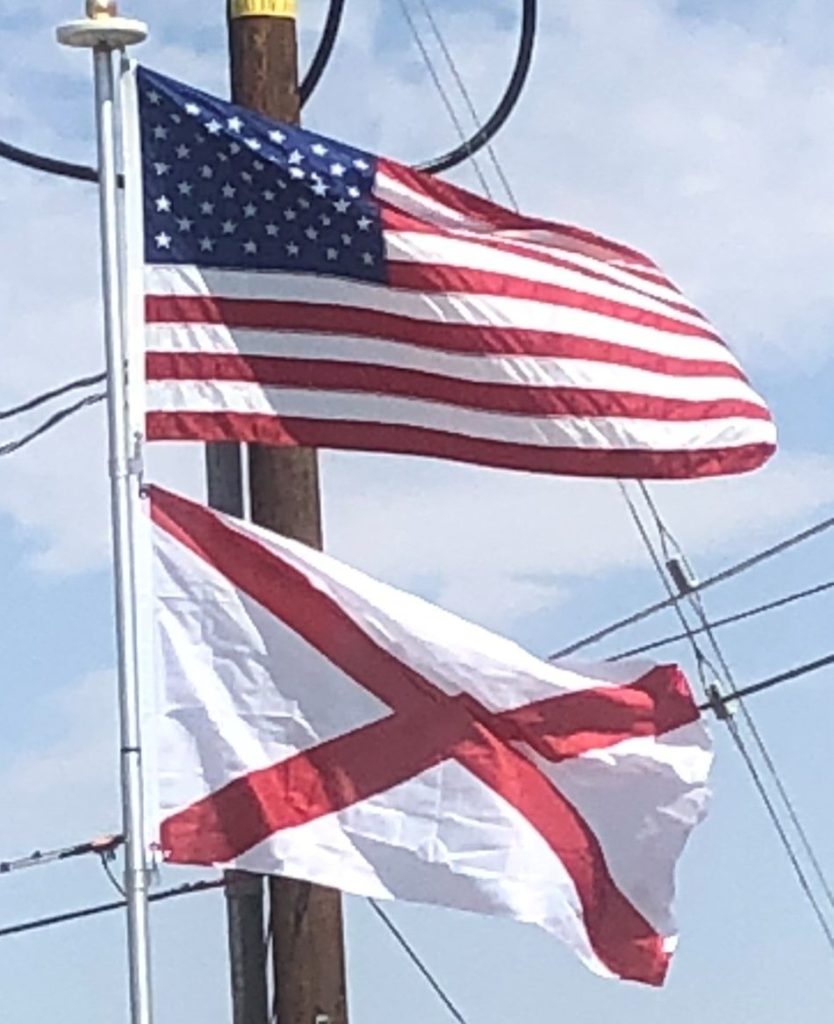After the French lost to the British in the Seven Years’ War, it became part of British West Florida from 1763 to 1783.

After the United States victory in the American Revolutionary War, the territory was divided between the United States and Spain. The latter retained control of this western territory from 1783 until the surrender of the Spanish garrison at Mobile to U.S. forces on April 13, 1813.
What are now the counties of Baldwin and Mobile became part of Spanish West Florida in 1783, part of the independent Republic of West Florida in 1810, and was finally added to the Mississippi Territory in 1812.
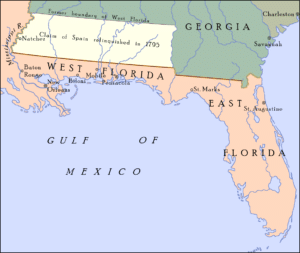
Most of what is now the northern two-thirds of Alabama was known as the Yazoo lands beginning during the British colonial period. It was claimed by the Province of Georgia from 1767 onwards. Following the Revolutionary War, it remained a part of Georgia, although heavily disputed.
With the exception of the area around Mobile and the Yazoo lands, what is now the lower one-third Alabama was made part of the Mississippi Territory when it was organized in 1798. The Yazoo lands were added to the territory in 1804. Spain kept a claim on its former Spanish West Florida territory in what would become the coastal counties until the Adams–Onís Treaty officially ceded it to the United States in 1819.
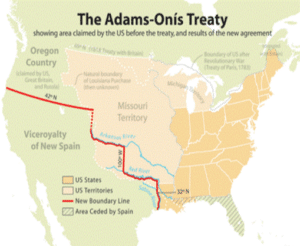
Early 19th Century:
Before Mississippi’s admission to statehood on December 10, 1817, the more sparsely settled eastern half of the territory was separated and named the Alabama Territory. The United States Congress created the Alabama Territory on March 3, 1817.
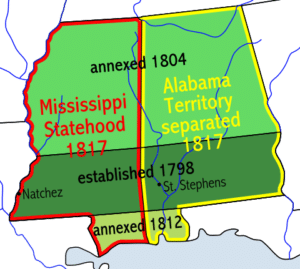
Alabama was admitted as the 22nd state on December 14, 1819.
Alabama Fever was underway when the state was admitted to the Union, with settlers and land speculators pouring into the state to take advantage of fertile land suitable for cotton cultivation. Alabama had an estimated population of under 10,000 people in 1810, but it increased to more than 300,000 people by 1830. Most Native American tribes were completely removed from the state within a few years of the passage of the Indian Removal Act by Congress in 1830.
Civil War and Reconstruction:
On January 11, 1861, Alabama declared its secession from the Union. After remaining an independent republic for a few days, it joined the Confederate States of America. The Confederacy’s capital was initially at Montgomery.

Alabama was heavily involved in the American Civil War. Although comparatively few battles were fought in the state, Alabama contributed about 120,000 soldiers to the war effort.
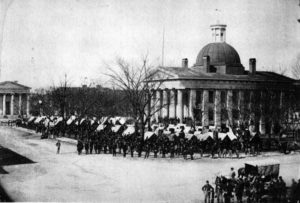
Following the war, the state remained chiefly agricultural, with an economy tied to cotton.
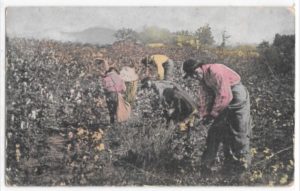
Reconstruction in Alabama ended in 1874, when the Democrats regained control of the legislature and governor’s office through an election dominated by fraud and violence. In 1875 legislation was approved that called for racially segregated schools. Railroad passenger cars were segregated in 1891. After disfranchising most African Americans and many poor whites in the 1901 constitution, the Alabama legislature passed more Jim Crow laws at the beginning of the 20th century to impose segregation in everyday life.
20th Century:
While the planter class had persuaded poor whites to vote for this legislative effort to suppress black voting, the new restrictions resulted in their disenfranchisement as well, due mostly to the imposition of a cumulative poll tax. By 1941, whites constituted a slight majority of those disenfranchised by these laws. Despite numerous legal challenges that succeeded in overturning certain provisions, the state legislature would create new ones to maintain disenfranchisement. The exclusion of blacks from the political system persisted until after passage of federal civil rights legislation in 1965 to enforce their constitutional rights as citizens.
